Custom App Development Guide for Shopify Store Owners
- Development
- ECommerce
- User Experience
Launched
May, 2025
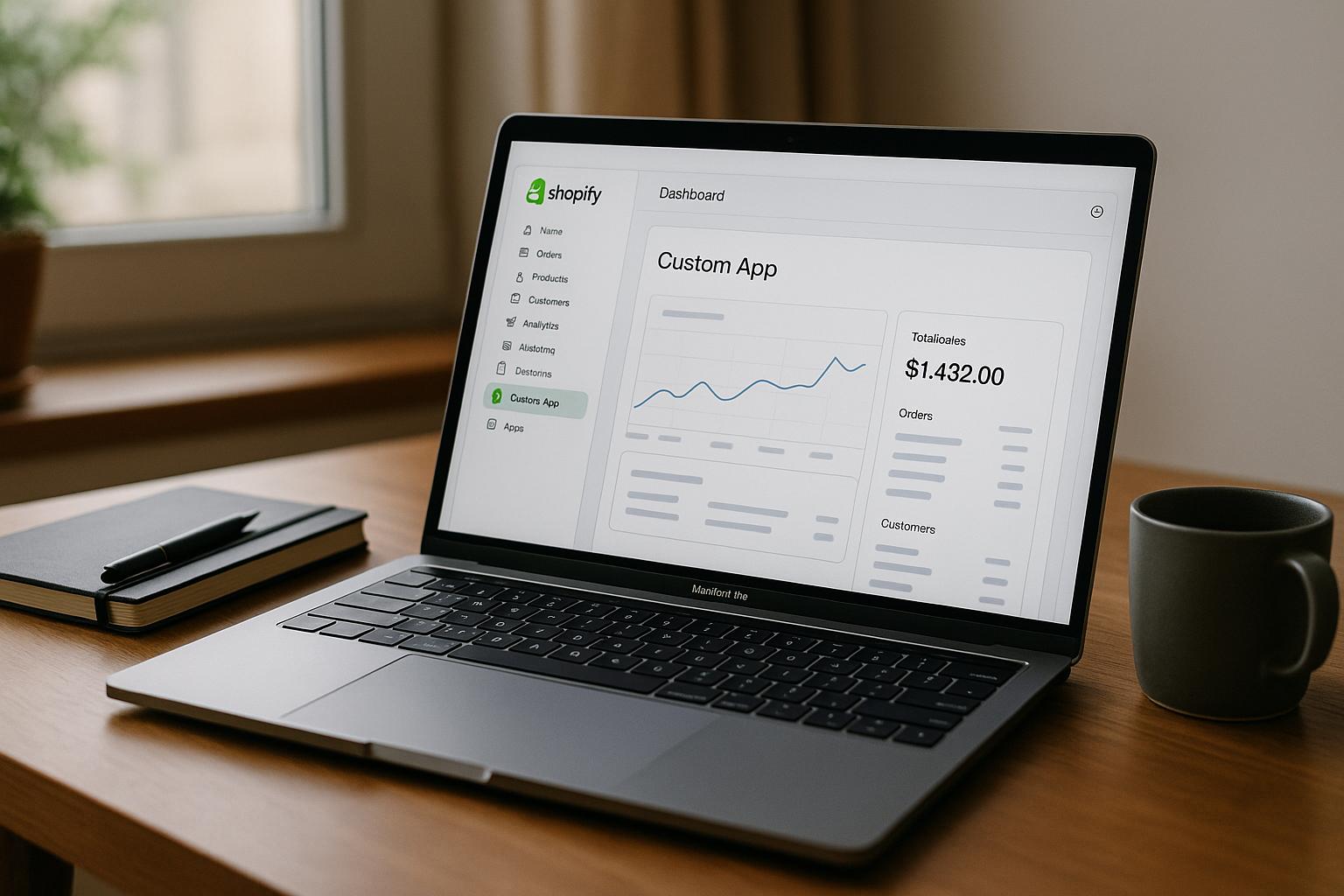
Custom Shopify apps are a game-changer for store owners looking to solve unique business challenges. They’re built exclusively for your store, offering tailored features, seamless integration, and scalability. Here’s a quick breakdown:
-
What Are Custom Apps?
Apps designed for your store to extend Shopify’s functionality using APIs. -
Why Build One?
- Full control over updates and features.
- Integrates with existing systems.
- Scales with your business.
- Adds unique functions standard apps can’t provide.
-
Who Benefits Most?
- B2B stores needing custom pricing or portals.
- High-volume retailers automating inventory.
- Specialty stores offering advanced product customization.
-
How to Get Started:
- Join the Shopify Partner Program for resources and tools.
- Meet technical requirements like API access and UI frameworks.
- Plan your app’s goals, features, and development timeline.
- Estimate costs ($5,000–$75,000+) and potential ROI.
- Development Steps:
Quick Tip: Start small with manageable features to avoid overcomplicating the process.
Custom apps can boost sales, improve efficiency, and enhance customer experience - making them a smart investment for growing stores.
Ultimate Guide to Shopify Custom App & OAuth Flow | Create Shopify Custom App from Partner Account
Getting Started
Kick off your custom app development journey with a solid plan and clear requirements in place.
Creating a Partner Account
The first step is to join the Shopify Partner Program, which is free to access and provides valuable development resources. The program has two tracks:
- Service Partner: Open to all members.
- Technology Partner: An invite-only track specifically designed for app developers this year.
By becoming a partner, you'll unlock benefits like unlimited development stores for testing, advanced development tools, revenue-sharing opportunities, and expert-level support.
Once enrolled, make sure you meet the technical requirements to start building.
Development Requirements
Before diving into development, ensure you meet these key technical prerequisites:
| Requirement | Description |
|---|---|
| API Access | Use Shopify's APIs with OAuth authorization for secure integration. |
| Performance Standards | Apps must maintain Lighthouse performance scores with no more than a 10-point reduction. |
| Billing Integration | Implement Managed Pricing or Shopify's Billing API for handling merchant charges. |
| UI Framework | Familiarity with Shopify Polaris to create a consistent and user-friendly interface. |
Once these requirements are in place, you can move on to evaluating costs and potential returns.
Cost and Return Analysis
Understanding the financial landscape of custom app development is essential for making smart decisions. Here's a breakdown of typical costs as of 2025:
| Complexity Level | Cost Range |
|---|---|
| Basic Development | $5,000 - $10,000 |
| Medium Complexity | $10,000 - $30,000 |
| Complex Solutions | $25,000 - $75,000+ |
To estimate your potential return on investment (ROI), use this formula:
ROI = ((Revenue - Cost) / Cost) × 100
Revenue can come from several sources, including:
- Increased conversion rates
- Better customer retention
- Enhanced upselling opportunities
- Lower operating costs
On the other hand, development costs typically include:
- Initial development expenses
- Ongoing maintenance and updates
- Marketing and promotion efforts
- App store fees (e.g., $99 annually for Apple, $25 one-time for Google Play)
Development Steps
Once you've nailed down your development needs and evaluated costs, it's time to roll up your sleeves and dive into building your custom Shopify app. Here's a breakdown of the main phases to guide you through the process.
Project Planning
Start by setting clear goals, defining requirements, and assigning team roles. This step lays the groundwork for everything to come.
| Role | Responsibilities |
|---|---|
| Project Owner | Define business goals and success metrics |
| Technical Lead | Oversee development and technical decisions |
| UX Designer | Design user flows and interfaces |
| QA Engineer | Plan testing strategies and ensure quality |
Your app requirements should be well-documented, including these elements:
- User Stories: Detail specific tasks merchants will perform within the app.
- Success Criteria: Identify measurable outcomes to assess your app’s effectiveness.
- Technical Specifications: Outline necessary APIs, integrations, and tools.
- Timeline Milestones: Set realistic checkpoints to track progress.
Once you’ve got a solid plan, move on to setting up your development environment.
Development Phase
This phase focuses on building the app while adhering to best practices.
-
Initial Setup
Use Shopify CLI to prepare your development environment, and implement version control to keep track of changes and streamline deployment. -
Core Development
- Implement OAuth for secure API access.
- Use Shopify's Polaris components for a consistent interface.
- Follow WCAG standards to ensure accessibility.
- Plan for internationalization to reach a broader audience.
-
Feature Implementation
When it comes to features, Preetam Nath highlights the importance of setting realistic goals:"Some apps might take you a year to build if you're a one-person team, and some apps can be built in two weeks as a solo person. You need to pick problems you can solve. Otherwise, you're just setting yourself up for failure".
Testing Process
Testing is a critical step that ensures quality and reliability. Automated testing, for example, can reduce time-to-market by 50%.
| Testing Phase | Tool | Purpose |
|---|---|---|
| API Testing | Postman | Validate that endpoints work correctly |
| UI Testing | Cypress | Check user interface functionality |
| Integration Testing | TestRail | Manage and track test cases |
"Automated testing helps teams build quality into their applications from the start".
Keep these testing tips in mind:
- Conduct thorough testing in development stores.
- Verify API interactions and webhooks.
- Test edge cases and error handling.
- Ensure the app performs well across stores of varying sizes.
- Prioritize secure and efficient data handling.
And remember, accessibility matters. As one expert puts it:
"Provide people with disabilities an equal opportunity to unlock the power of commerce".
sbb-itb-db4b75e
Development Tools
When building custom Shopify apps, three key tools stand out: APIs, Polaris UI, and app extensions. These tools form the backbone of the development process and help streamline each phase.
Working with APIs
Shopify provides powerful APIs to enable smooth integration. Starting April 1, 2025, all new public apps must use the GraphQL Admin API, as the REST Admin API will shift to legacy status.
| API Type | Best Used For | Rate Limits |
|---|---|---|
| GraphQL Admin | Complex queries, chained requests | Based on query cost |
| REST Admin | Simple atomic requests, bulk ops | 40 requests/min (400 for Plus stores) |
| Storefront API | Customer-facing functionality | Varies by implementation |
The choice between REST and GraphQL depends on your app's needs. GraphQL is ideal for handling complex queries efficiently, as highlighted by Pritam Roy, Founder/Architect at Kashmere Labs:
"In a nutshell, the motto of GraphQL is don't waste bandwidth and don't fetch more data than you need…"
Once your API integration is in place, you can shift focus to creating a seamless user interface.
Using Polaris UI
After setting up your API, the next step is designing a consistent and intuitive interface. Shopify’s Polaris UI provides a set of tools, including CSS and React components, to simplify this process. Polaris helps reduce development time while ensuring your app aligns with Shopify’s design standards. Here's how:
- CSS Components: Ideal for static HTML implementations.
- React Components: Perfect for dynamic, interactive interfaces.
Polaris also offers pre-built components, design guidelines, a UI playground, Sketch UI kits, and React libraries. These resources make it easier to maintain consistency across your app’s design and functionality.
With your interface polished, you can extend your app's capabilities within Shopify using app extensions.
App Extensions Guide
App extensions allow you to integrate additional features directly into Shopify. Here are the primary extension types:
| Extension Type | Purpose | Approval Required |
|---|---|---|
| Admin Actions | Add custom modals to the Shopify admin | No |
| Checkout UI | Customize the checkout flow | No |
| Theme App | Integrate with online store themes | No |
| Payments | Offer custom payment methods | Yes |
Checkout UI extensions are particularly useful, as they let you safely customize the checkout page while ensuring data security. To develop and test these extensions, use the Shopify CLI. For theme extensions, implement app blocks and app embed blocks to enhance functionality.
Maintenance and Updates
Once your app is live, the work isn't over. Regular maintenance, updates, and security checks are essential to keep it running smoothly and staying relevant. These ongoing efforts build on the initial development and testing phases, ensuring your app delivers value over time. Let’s dive into practical approaches for managing updates, enhancing security, and driving continuous improvements.
Update Management
Keeping your app up-to-date requires a structured plan to ensure compatibility and optimal performance. Using source control to track changes and automating deployments can help minimize errors and streamline the process.
Here’s an example of an update management schedule:
| Update Type | Frequency | Key Actions |
|---|---|---|
| Security Patches | Monthly | Audit dependencies and rotate API keys |
Regularly updating dependencies is crucial. Tools like npm audit or bundler-audit can help identify and address vulnerabilities before they become issues.
Security and Performance
Strong security measures are vital for protecting your app and the data of your users. Shopify App Development expert James Hall highlights the importance of security:
"Ensuring great app security not only earns you the trust of your customers, it also greatly increases the long term chances of success for your business."
Here are some key security practices to consider:
- Environment Protection: Store Shopify keys in environment variables and always secure connections with TLS/SSL.
- Authentication Security: Use modern salted hashing algorithms for passwords and make it a habit to rotate API keys regularly to prevent unauthorized access.
- Database Security: Add a
tenant_idto each database table and enforce query scoping to avoid cross-installation data leaks.
App Improvements
Improving your app should be an ongoing effort, guided by user feedback and performance metrics. Focus on these areas to keep your app running at its best:
- Performance Monitoring: Use static analysis tools to spot potential issues, like SQL injection risks, before they escalate.
- Automated Testing: Maintain a robust test suite to ensure your app functions as intended.
- Code Reviews: Regular reviews help catch problems early and improve overall security.
- User Feedback: Set up automated systems to collect feedback during key user interactions.
When deciding which improvements to tackle first, prioritize changes that enhance the user experience or strengthen security. As Schneier's Law reminds us:
"Anyone, from the most clueless amateur to the best cryptographer, can create an algorithm that they themselves can't break. [...] What is hard is creating an algorithm that no one else can break, even after years of analysis."
Conclusion
Development Overview
Creating a custom app for Shopify requires careful planning, efficient execution, and regular updates. The journey from idea to deployment hinges on understanding the needs of merchants and prioritizing strong security measures. As developer Preetam Nath points out:
"Some apps might take you a year to build if you're a one-person team, and some apps can be built in two weeks as a solo person. You need to pick problems you can solve. Otherwise, you're just setting yourself up for failure."
This highlights the importance of choosing manageable projects and aligning them with your skills and resources.
Business Results
The impact of custom app development is evident in success stories like Humble Beginnings, a Jeansmith company. After introducing a product customization app, they experienced a 35% boost in sales. Here's a closer look at their results:
| Metric | Result |
|---|---|
| Sales Increase | 35% |
| Key Features | Custom cart, Apple/Google Pay integration |
| Added Value | Personalized messages, product variations |
This example demonstrates that tailored app solutions can lead to tangible business improvements. It reinforces the value of a structured, well-thought-out development process.
Next Steps
To turn your custom app idea into reality and achieve similar success, consider these key steps:
-
Validate Your App Idea
Start by researching your target market and testing your concept. As Preetam Nath advises:"If you want to build your app into a product or business that replaces your salary, you need to know if people are willing to pay for it."
-
Design for Integration
Use Shopify's design system, Polaris, for seamless integration. Jennifer Gray, a Front-end Developer at Shopify, emphasizes:"If app developers don't have a designer on their team, Polaris is exactly the tool they should be using."
-
Focus on Customer Experience
Build feedback systems, maintain open communication channels, and use customer reviews to guide app improvements.
Finally, keep accessibility in mind. Scott Vinkle, Shopify Platform Accessibility Specialist, reminds developers:
"Provide people with disabilities an equal opportunity to unlock the power of commerce."
FAQs
What are the main advantages of building a custom app for my Shopify store instead of using pre-built apps?
Creating a custom app for your Shopify store lets you design solutions tailored specifically to your business. Unlike off-the-shelf apps, a custom app can include the exact features you need, deliver a personalized user experience, and integrate smoothly with your current systems.
With a custom app, you have complete control over its features, design, and ability to grow with your business. Shopify's APIs allow direct access to your store's data, enabling you to boost functionality, enhance performance, and even connect with other platforms. This approach can streamline your processes, elevate the customer experience, and give your store a solid advantage in the marketplace.
How can I calculate the ROI of a custom Shopify app, and what key factors should I take into account?
To figure out the return on investment (ROI) for a custom Shopify app, you’ll need to weigh the app's costs against the value it brings to your business. The formula is straightforward: ROI = (Net Profit / Cost of Investment) x 100.
Here are some key elements to evaluate:
- Revenue growth: Does the app boost sales by enhancing the customer experience or enabling better upselling and cross-selling opportunities?
- Customer retention: Will its features encourage repeat purchases or improve engagement through personalized functionality?
- Development and maintenance costs: Factor in the initial development expenses, as well as ongoing updates and support.
- Operational efficiency: Can the app save time or reduce costs by automating tasks or integrating seamlessly with other tools?
By examining these factors, you can assess if the app is likely to generate tangible benefits and align with your business objectives.
What are the key steps and tools for building and maintaining a custom Shopify app?
To build and maintain a custom Shopify app, it’s important to start with a solid understanding of Shopify’s app ecosystem. Clearly define what your app is meant to do and make sure it aligns with your store’s specific needs and goals. Before diving into development, validate your idea to confirm it’s worth pursuing.
For the development process, tools like Shopify's APIs, SDKs, and the Shopify CLI are indispensable. The Shopify CLI, in particular, can save time by simplifying app creation, generating extensions, and managing development workflows efficiently.
Creating custom apps requires technical skills, so this task is best handled by the store owner or a team member who has the necessary permissions and expertise. Once the app is up and running, regular maintenance is key. This includes keeping the app compatible with Shopify’s updates and ensuring it continues to meet your business needs. Routine testing and updates will help deliver a smooth experience for your customers.
Let's build something together
If you like what you saw, let's jump on a quick call and discuss your project
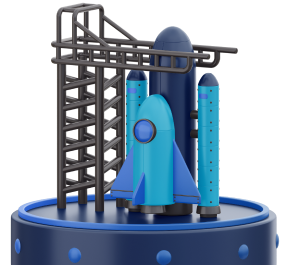
Related posts
Check out some similar posts.
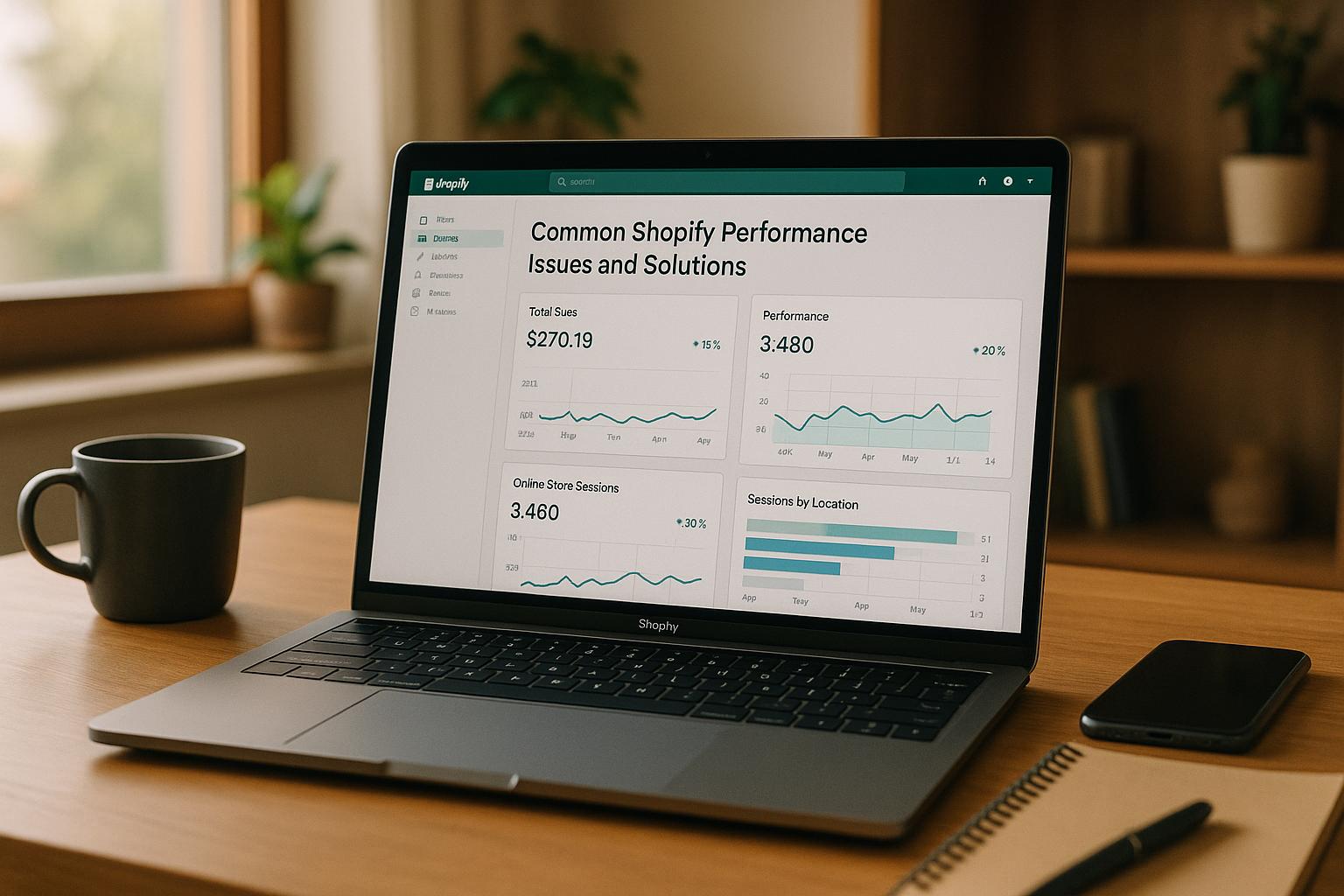
- Development
Learn how to tackle common performance issues in your Shopify store to enhance speed, improve user e...
Read more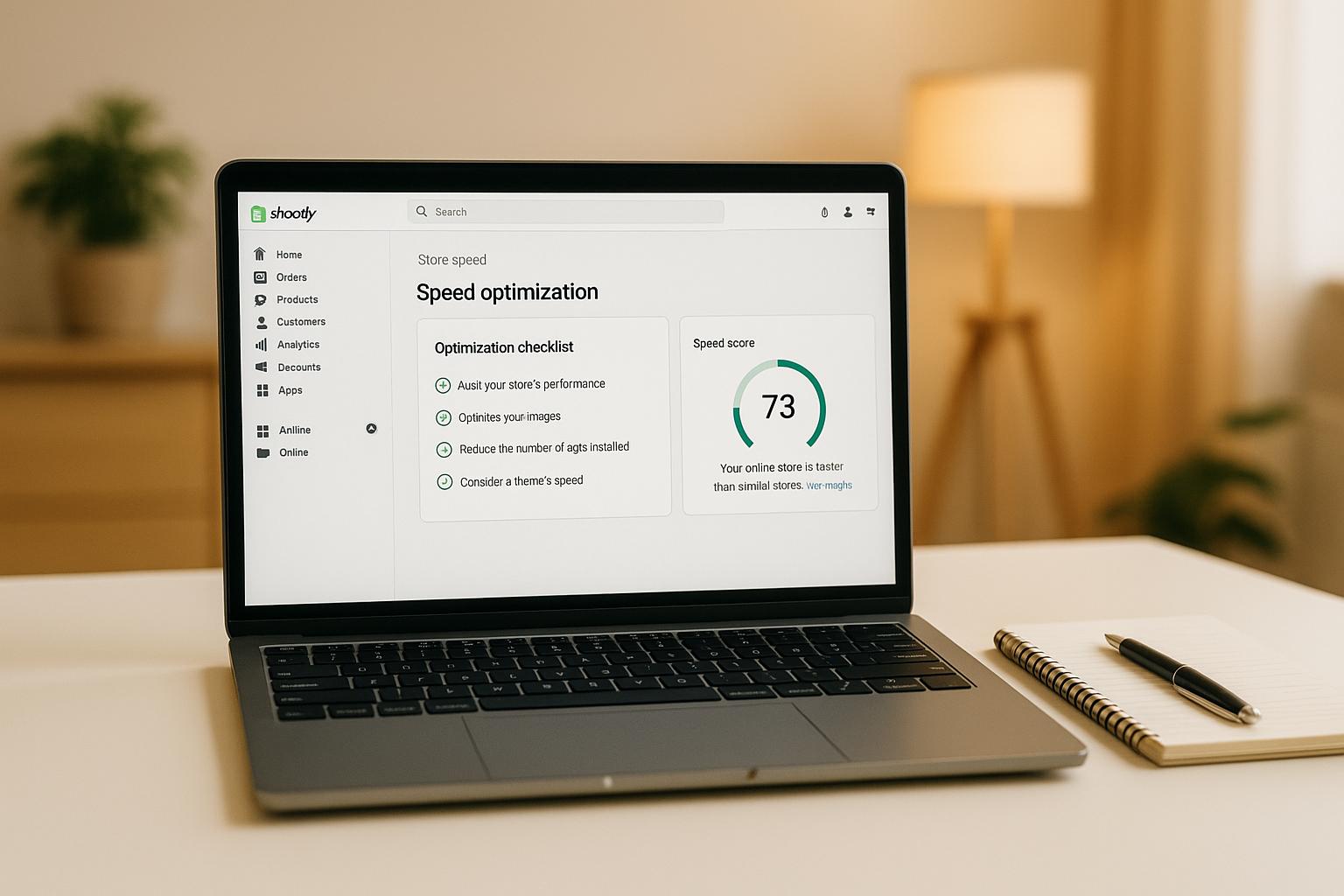
- ECommerce
Improve your Shopify store's speed with essential optimization techniques, including theme selection...
Read more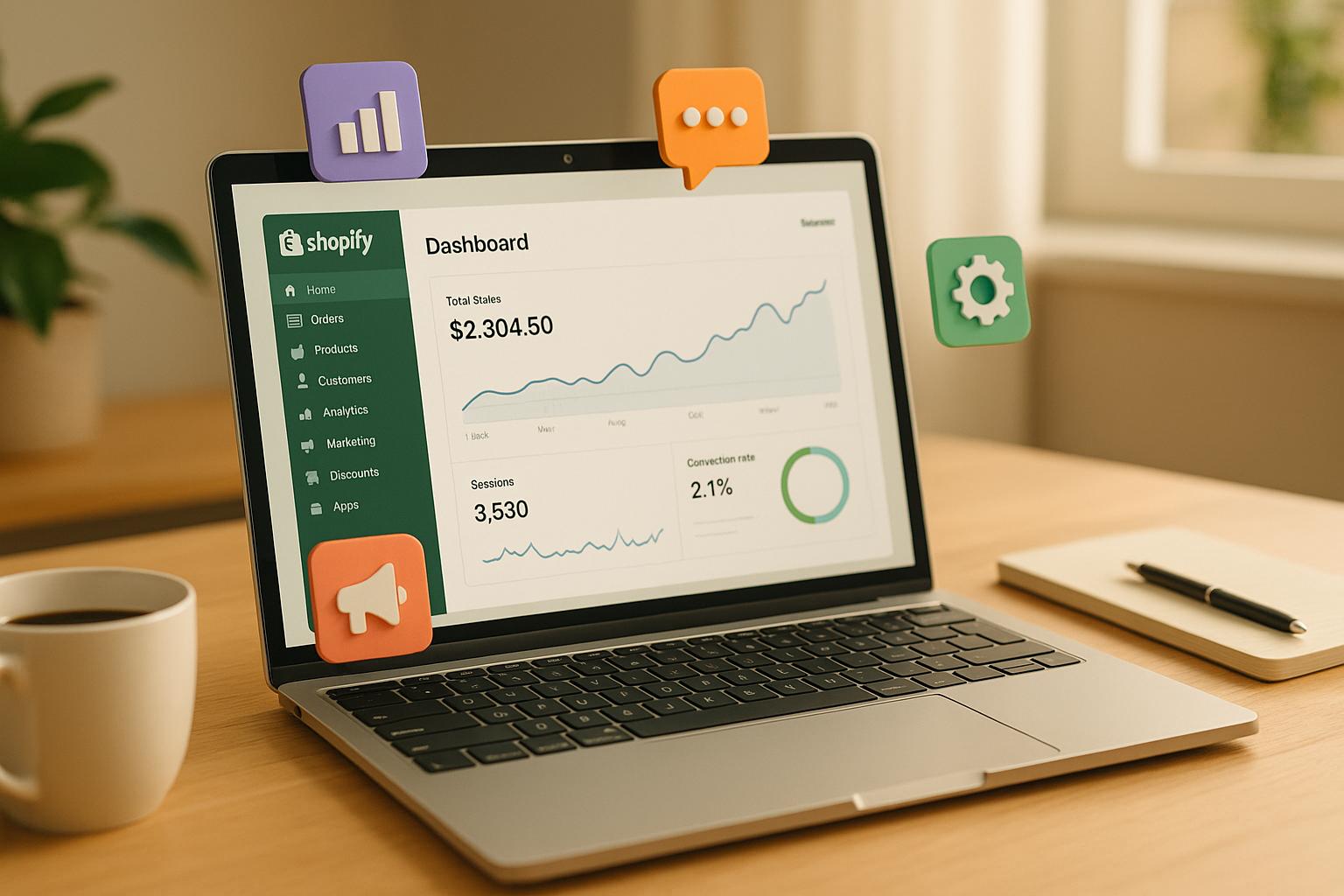
- Development
Explore essential Shopify apps that can significantly boost your store's conversion rates and enhanc...
Read more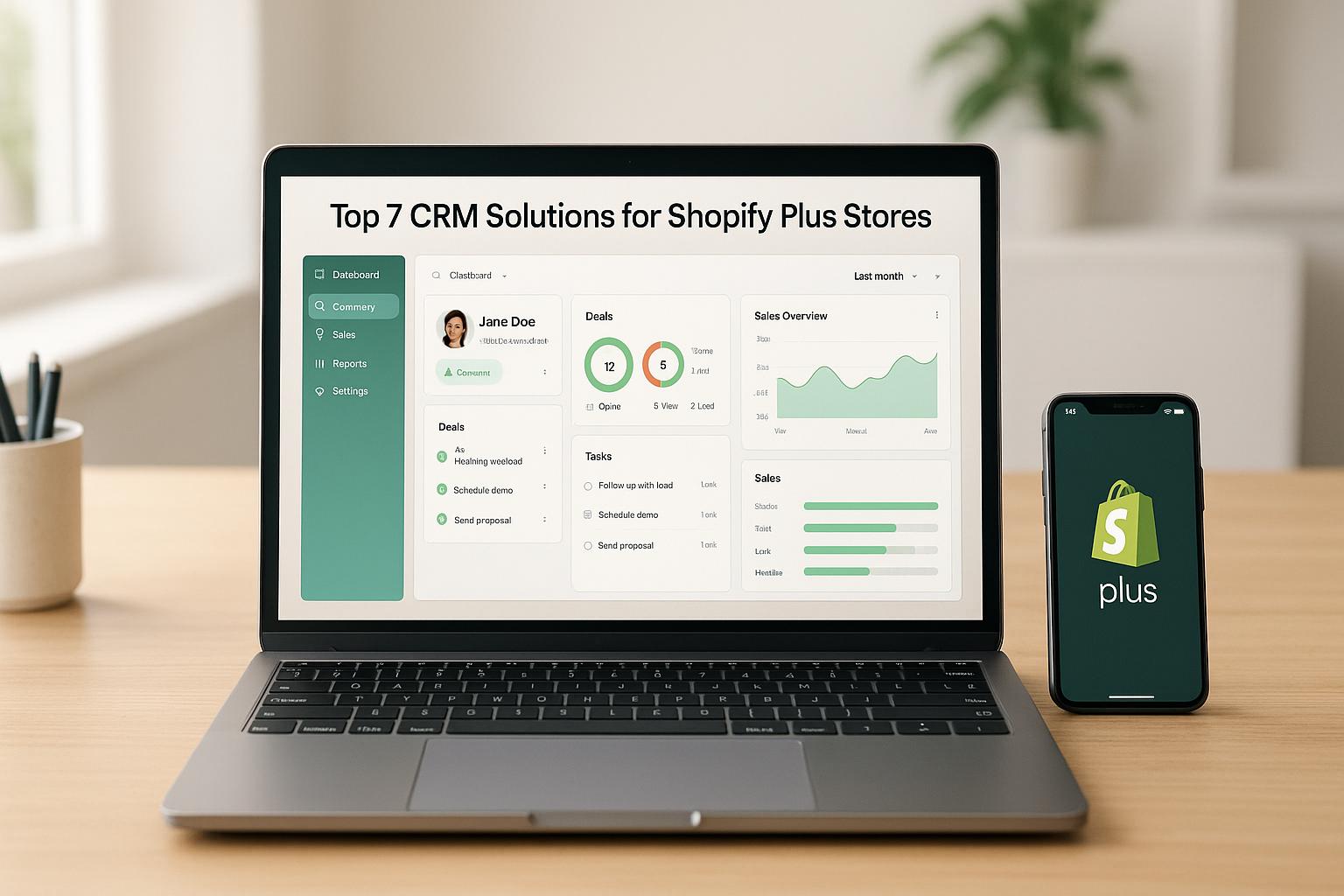
- Development
Explore top CRM solutions for enhancing customer relationships and boosting sales in Shopify Plus st...
Read more